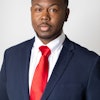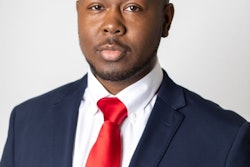In the post-Hurricane Katrina era, the future remains uncertain for New Orleans college athletics.
Eddie Francis bursts out laughing when he recounts his unexpected coaching debut for Southern University at New Orleans this past semester. The men’s track team was planning to travel to Tennessee for a national indoor championship meet, but their part-time coach, a runner himself, couldn’t accompany them because of a race he would run in Europe that same week. Furthermore, neither of SUNO’s basketball coaches could fill in because of scheduling conflicts.
So Francis accompanied the team and cheered the players to an 11th-place finish out of 44 teams. It gave him a crash course not only in coaching, but also in track and field in general. That’s because he’s the interim director of public relations and sports information at SUNO.
“All I knew to tell the guys was to run fast,” he recalls. “And they did! They did a great job. Who would’ve thought the PR guy would be up there coaching? I never coached a team in my life!”
All jokes aside, Francis’ coaching cameo illustrates how New Orleans’ historically Black colleges have resurrected some sports programs in the post-Hurricane Katrina era — any way they can.
Massive flooding from the storm nearly three years ago not only pounded campuses and forced the cancellation of classes for a semester, it also leveled intercollegiate athletics for at least two semesters. Many coaches and athletic directors were laid off.
Gymnasiums and equipment were damaged or destroyed; trophies and uniforms washed away. Student-athletes, like other young people, signed up for classes elsewhere around the country, most of them unable to play sports because of scholarship restrictions.
As Dillard University president Dr. Marvalene Hughes puts it, “The fact that we’ve got any athletics today is a miracle.”
In the aftermath of the flood and mass evacuations, much media attention focused on the New Orleans’ Saints in football and the Hornets in basketball, professional teams that played home games elsewhere the latter part of 2005. Pro sports phasing in their return to the city in 2006 became a metaphor to the overall rebuilding.
However, the pro teams received marketing and other assistance from their respective leagues. Colleges, meanwhile, have struggled by themselves.
Some of their sports have returned while others remain scrapped, perhaps permanently. And high-profile intercollegiate sporting events have seen attendance plummet. For instance, turnout for the annual Bayou Classic, which pits Southern and Grambling State universities against each other in Black college football’s most popular matchup, has fallen by more than 20 percent since Katrina. Whereas attendance easily topped more than 67,000 in the six years leading up to Katrina, the head counts of 47,136 in 2006 and 53,297 in 2007 were among the lowest in the game’s 34-year history.
Attendance is also flagging at Xavier University of Louisiana sporting events. As a whole, Xavier’s campus sustained less flood damage than SUNO and Dillard. So when Xavier reopened in the 2006 spring semester, there was no need for temporary, alternate sports facilities, and the gym had a new floor in place, says sports information director Ed Cassiere.
Its 18 home games in men’s basketball this past school year drew an average of only 556 fans, Cassiere says, yet the team finished with a 24-10 record that netted its fifth straight 20-win season and an appearance in the NAIA’s Division I national tournament. Home attendance in 2006-07 was similar to this past year’s, compared to an average 1,057 for 2004-05 before Katrina.
“A fair chunk of the population has relocated,” says Gary Roberts, law school dean of Indiana University-Purdue University Indianapolis and former deputy dean of Tulane University’s law school. “Even people who went back to rebuild, they’re struggling financially.”
Roberts and other observers don’t expect a significant increase in turnout at Black sporting events in New Orleans soon. Since the flood, speculation has abounded that the Saints and Hornets may move to other cities. So penny-pinched fans hope to convince them to stay through ticket buying.
“With the Saints and Hornets sucking huge chunks of money out of New Orleanians, it could take a long time for them to support college sports again,” says Roberts.
Wealthier, predominantly White institutions like Tulane haven’t been immune to cutbacks either. Because of Katrina, Tulane officials suspended seven and canceled one of its 16 intercollegiate sports in 2006. Currently, Tulane fields teams in football, men’s and women’s basketball, baseball, women’s volleyball, women’s cross country, women’s indoor and outdoor track. By the fall, officials plan to reinstate women’s golf and tennis, as well as men’s outdoor track and cross country. By the 2010 fall semester, plans call for restoring men’s tennis along with women’s soccer and swimming. At that time, a new women’s bowling program will be added, a university spokesman says. Men’s golf didn’t return after Katrina.
Meanwhile, Dillard not only suspended some sports, it drastically trimmed the number of scholarships and their amounts. “The whole department was cut in half,” says Kiki Baker Barnes, head coach of women’s basketball and interim athletic director.
At the time Katrina struck, Barnes was assistant coach. Six to 10 feet of floodwaters submerged the campus, causing more than $300 million in damages. She and others feared Dillard might scrap sports altogether amid the financial crisis. Barnes, other coaches and non-tenured faculty were laid off.
But Hughes, the president, made a point of retaining on the payroll Robin Martin, the athletic director at the time. That move was to prove to students her commitment to restoring sports alongside academics, Hughes says. “I wanted Robin to move around the country staying in touch with students while we were displaced from campus. I know how important it is to the college experience to have an athletic program.”
When Dillard faculty and students resumed classes in the 2006 spring semester at a Hilton hotel, Martin shoehorned her athletes into workouts anywhere she could. Sprinters exercised alongside tennis and volleyball players. Workouts and scrimmages were sandwiched between classes. The Hilton offered use of its basketball and tennis courts, and NAIA granted athletes from Dillard, SUNO, Xavier and other storm-affected schools a redshirt for 2005- 06. So, as long as they hadn’t played any games while attending other schools during their displacement from New Orleans, they retained a year of eligibility for the future.
After Martin left Dillard-at-the-Hilton for a job elsewhere, Barnes was rehired for the 2006 fall semester and assumed her current positions. Men’s and women’s basketball, among the first teams Dillard reinstated, used Delgado Community College as its home court that school year. Complicating matters even more was the fact that SUNO’s men’s and women’s teams did the same. This meant games were played at odd hours, giving fans little reason to show up. And SUNO and Dillard officials scrambled for basic amenities at Delgado.
“We had to negotiate to get concessions open during our games,” SUNO’s Francis says. “Coaches are supposed to focus on the games, getting the players ready, yet there they were, dealing with problems like promotions, concessions negotiations. If it hasn’t been one thing, it’s been another.”
Indeed, SUNO administrators currently occupy only the Health and Physical Education building on campus. Classes and faculty offices have been housed in an offcampus complex of temporary trailers since early 2006 because campus cleanup and repairs are ongoing. FEMA, the state of Louisiana and SUNO continue tussling over who’s paying for what.
Francis says the home court for SUNO basketball teams in 2008-09 hasn’t been determined, although another deal with Delgado is a possibility. With the exception of its games versus archrivals Dillard and Xavier, which drew standing-room only crowds, SUNO games have drawn fewer than 100 fans on average at Delgado. “Student body morale is shot without our home court,” Francis says.
Barnes says that the move back to Dillard’s own gym nearly a year ago gave players and coaches a much-needed boost. But she and other coaches continue wrestling with recruiting challenges. Their tight budget doesn’t allow for much travel anymore, so they’re limited to viewing videos of high school players in action as well as tapping their alumni chapters around the country to meet prospects in person.
The future remains uncertain for sports that haven’t been restored yet. SUNO officials plan to bring back men’s cross country this fall, but its women’s track and cross country teams remain suspended. At Xavier, officials haven’t set a target date to reinstate women’s volleyball. Dillard is still missing men’s and women’s tennis, as well as men’s and women’s cross country.
What is certain is that financial constraints will continue for all of them.
“We’re definitely having to be more creative,” Barnes says.
Click here to post and read comments
© Copyright 2005 by DiverseEducation.com


















